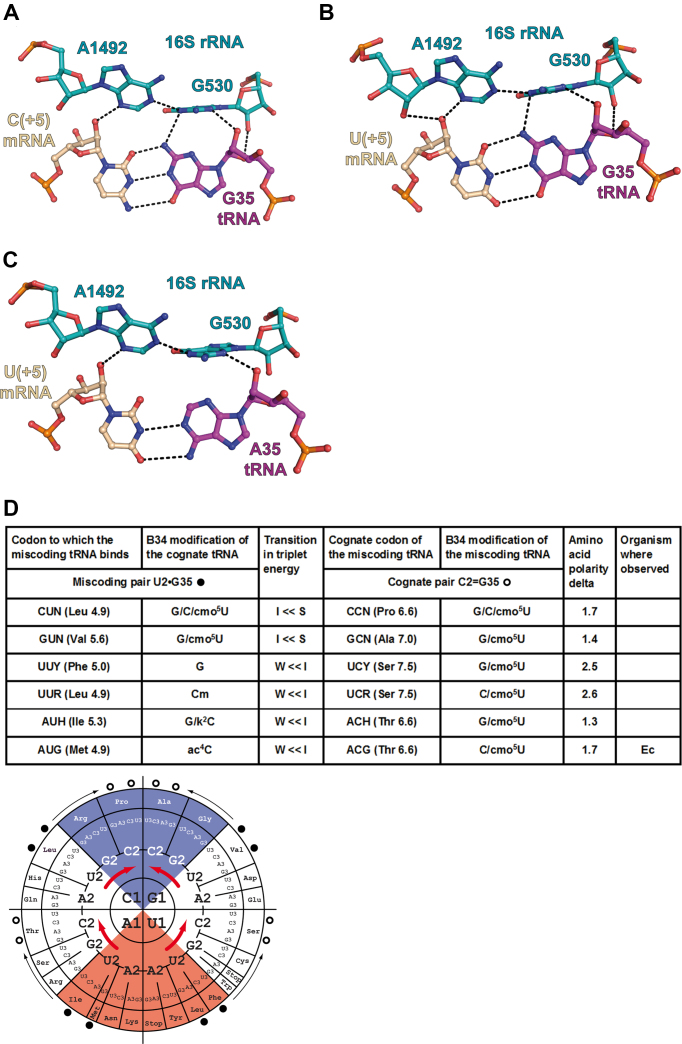Figure 5.
Substitution of a C2 = G35 pair or a U2-A35 pair by a U2•G35 base pair in the second position of the codon–anticodon duplex. (A) Cognate C2 = G35 pair from the complex of 70S ribosome with mRNA and tRNAThr (this study, PDB ID 6gsj); (B) near-cognate U2•G35 pair from the complex of 70S ribosome with mRNA and tRNAThr (this study, PDB ID 6gsk); (C) U2-A35 pair from the complex of 70S ribosome with mRNA and tRNAVal (PDB ID: 5ibb). Same comments as in Figure 4. (D, top) The in vivo data for Escherichia coli and Saccharomyces cerevisiae are from (6,7) and (28); those for the CHO cells are from (27). (D, bottom) The miscoding pairs (dark circles) are indicated with the thin arrows pointing to the miscoding tRNA (open circles) (e.g. a tRNAThr miscodes a Met codon). The thick red arrows indicate the energetic transitions between Intermediate (white) and Strong (blue) codon–anticodon triplets as well as between Weak (red) and Intermediate ones. Because the substitutions are at the second position, the transitions occur within each of the four quadrants. The miscoding tRNAs replace weaker tRNAs. Concerning the modifications, the situation is more difficult to evaluate because of the tRNA isoacceptors. Only one instance could be found in the literature.

